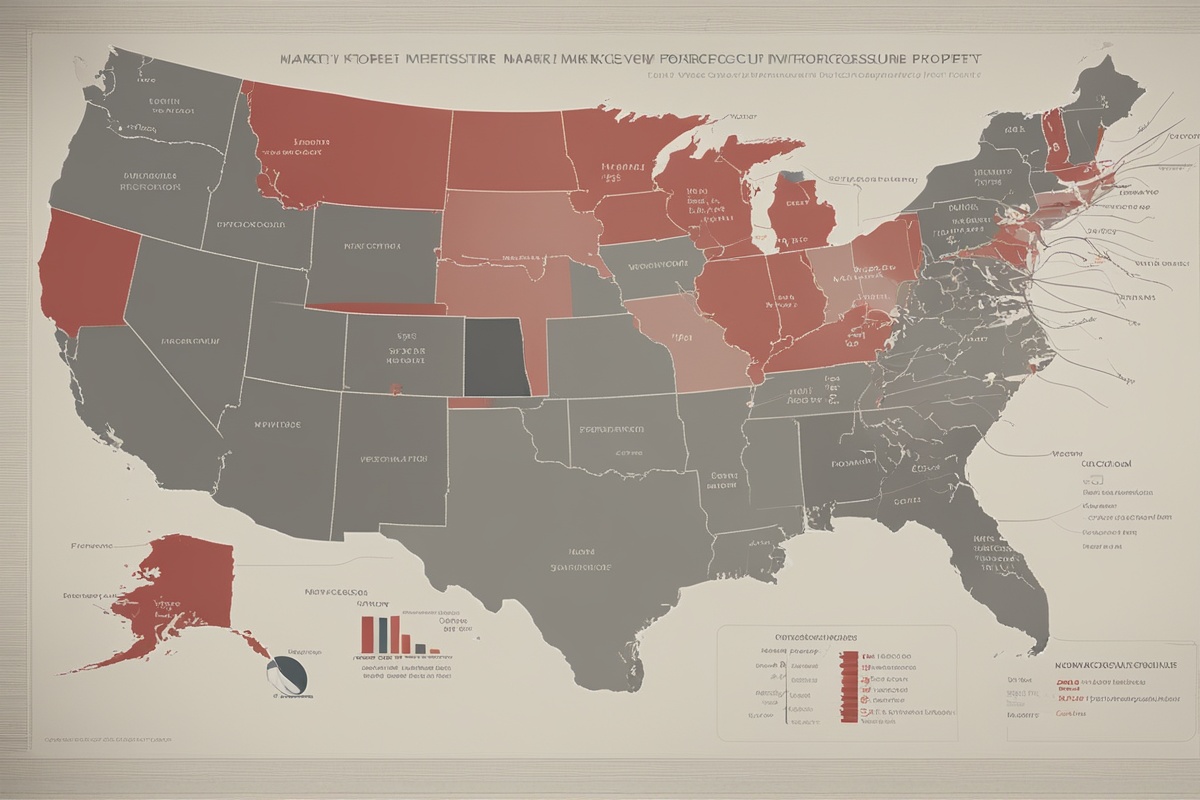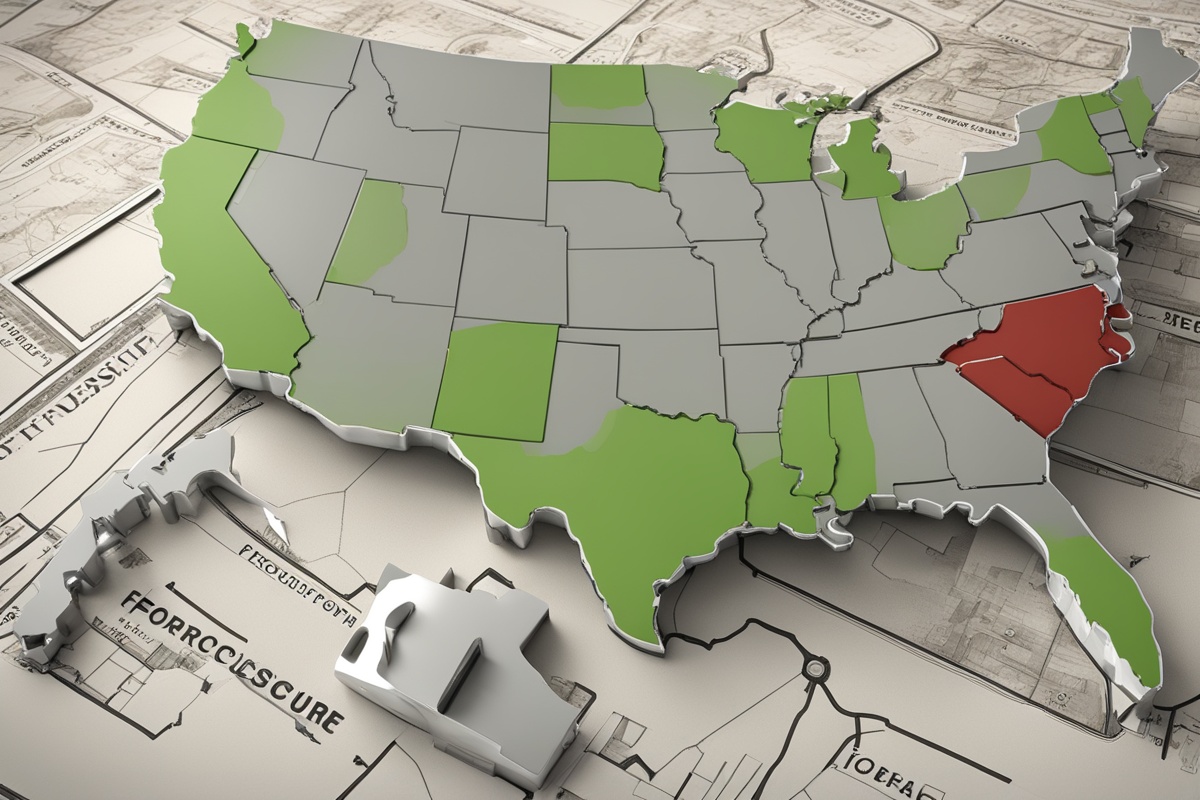Navigating the world of foreclosure properties can be both exciting and daunting for real estate investors. Whether you’re a seasoned professional or just dipping your toes into the market, understanding how to conduct a thorough market analysis is the cornerstone of making profitable decisions in the foreclosure niche. Foreclosures often present unique opportunities to acquire properties at below-market prices, but without a solid grasp of the real estate market dynamics, you risk overpaying or missing out on hidden gems. In this comprehensive guide, we’ll walk you through the ins and outs of market analysis tailored specifically for foreclosure-focused real estate investments. From identifying key trends to leveraging data, let’s dive into how you can position yourself for success in this competitive arena.
Why Market Analysis Matters in Foreclosure Real Estate
When it comes to investing in foreclosed properties, market analysis isn’t just a step—it’s the foundation of your strategy. Foreclosures, by nature, are distressed assets, often sold under pressure by banks or homeowners facing financial hardship. This creates opportunities for buyers, but it also comes with risks like hidden repair costs or legal complications. A well-executed market analysis helps you understand the broader real estate landscape, pinpointing areas where foreclosures are likely to yield high returns. It also equips you with the knowledge to assess whether a property’s price aligns with its potential value after rehabilitation (Smith, 2020). Without this insight, you’re essentially gambling rather than investing. So, let’s break down why this process is non-negotiable for anyone serious about foreclosure deals.
Key Components of a Real Estate Market Analysis for Foreclosures
Conducting a market analysis for foreclosure properties involves several critical components that give you a 360-degree view of the opportunity. Unlike traditional real estate transactions, foreclosures often require a deeper dive into distressed market indicators. Here are the essential elements you should focus on to build a robust analysis:
- Local Market Trends: Examine housing demand, average sale prices, and inventory levels in the target area. Areas with declining prices may have more foreclosure opportunities, but be wary of long-term depreciation risks.
- Foreclosure Rates: Use data from sources like county records or platforms such as RealtyTrac to identify neighborhoods with high foreclosure activity. This can signal a buyer’s market (Johnson, 2021).
- Comparable Sales (Comps): Look at recently sold foreclosed properties in the same area to gauge fair market value. This helps you avoid overbidding at auctions or sheriff’s sales.
- Economic Indicators: Assess unemployment rates, job growth, and median income in the region. Economic stability often correlates with property value recovery post-foreclosure.
By piecing together these elements, you’ll develop a clearer picture of where the property investment opportunities lie and how to approach foreclosure deals with confidence.
Tools and Resources for Analyzing the Foreclosure Market
Thankfully, in today’s digital age, real estate investors have access to a plethora of tools and resources to streamline market analysis. Whether you’re focusing on foreclosure listings or broader housing market trends, leveraging technology can save you time and improve accuracy. Platforms like Zillow and Redfin provide basic data on property values and historical sales, but for foreclosure-specific insights, consider subscribing to services like Foreclosure.com or Auction.com. Additionally, government websites such as HUD.gov offer valuable information on federally backed foreclosures and local market conditions (U.S. Department of Housing and Urban Development, 2022). Don’t overlook local resources either—county clerk offices often publish foreclosure notices and auction schedules, giving you a direct line to upcoming opportunities. Combining these tools with manual research ensures you’re not missing critical data points in your real estate analysis.
Practical Tips for Spotting Foreclosure Opportunities in Real Estate
Now that you understand the components and tools for market analysis, let’s get into actionable strategies to spot the best foreclosure deals in the real estate market. The foreclosure space is competitive, with investors and flippers vying for the same properties, so you need to be proactive and strategic. Here are some practical tips to help you stay ahead of the curve:
- Network with Local Experts: Build relationships with real estate agents, wholesalers, and even bank representatives who specialize in REO (real estate owned) properties. They often have insider knowledge of upcoming foreclosures.
- Focus on Emerging Markets: Look for areas undergoing revitalization or infrastructure development. Foreclosed properties in these zones can appreciate significantly over time (Brown, 2019).
- Attend Foreclosure Auctions: While risky, auctions can yield bargains if you’ve done your homework. Arrive prepared with financing and a maximum bid based on your market analysis.
- Monitor Delinquency Rates: High mortgage delinquency rates in a region often precede foreclosures. Use reports from the Federal Reserve or local banks to identify at-risk areas.
- Evaluate Property Condition: Many foreclosed homes are sold “as-is,” so factor in repair costs during your analysis. A cheap purchase price can quickly become a money pit without due diligence.
Implementing these tips can give you a competitive edge, helping you uncover foreclosure deals that align with your property investment goals.
Common Pitfalls to Avoid in Foreclosure Market Analysis
While the potential for profit in foreclosure real estate is enticing, there are several pitfalls that can derail even the most well-intentioned investors. One common mistake is failing to account for hidden costs, such as liens, back taxes, or extensive repairs, which can erode your profit margins. Another error is over-relying on outdated data—real estate markets are dynamic, and foreclosure trends can shift rapidly due to economic changes or policy updates (Taylor, 2020). Additionally, many new investors focus solely on price without considering location or resale potential, leading to properties that sit unsold for months. Always cross-check your findings with multiple sources and consult professionals when needed to avoid these costly missteps in your housing market analysis.
Future Trends Impacting Foreclosure Real Estate Markets
As we look ahead, several emerging trends are poised to shape the foreclosure segment of the real estate industry. Economic factors like rising interest rates and inflation could lead to an uptick in mortgage defaults, potentially increasing the supply of foreclosed properties in the coming years (Federal Reserve, 2023). At the same time, government interventions, such as forbearance programs or foreclosure moratoriums, may temporarily suppress inventory, creating a bottleneck of distressed properties. Technology is also playing a bigger role, with AI-driven platforms offering predictive analytics to forecast foreclosure hotspots. Staying informed about these trends through industry reports and news outlets will help you adapt your market analysis strategies and seize opportunities in the evolving property investment landscape.
In conclusion, mastering market analysis for foreclosure-focused real estate is a game-changer for investors looking to capitalize on distressed properties. By understanding local trends, leveraging the right tools, and avoiding common pitfalls, you can make informed decisions that maximize your returns. The foreclosure market is not without its challenges, but with a strategic approach to analyzing the housing market, you’ll be well-equipped to navigate its complexities. Whether you’re hunting for bargains at auctions or scouring listings for hidden opportunities, remember that knowledge is your greatest asset. So, take the time to research, network, and refine your skills—your next big real estate deal could be just around the corner.
References
- Brown, A. (2019). Emerging markets and real estate investment: Opportunities in revitalization zones. Journal of Property Investment & Finance, 37(4), 345–360.
- Federal Reserve. (2023). Economic projections and interest rate impacts on housing. Retrieved from https://www.federalreserve.gov
- Johnson, R. (2021). Foreclosure trends in urban markets: A data-driven analysis. Real Estate Economics, 49(2), 210–225.
- Smith, T. (2020). Assessing value in distressed properties: A guide for investors. Journal of Real Estate Research, 42(3), 301–318.
- Taylor, L. (2020). Common mistakes in foreclosure investments. Property Management Review, 28(1), 89–102.
- U.S. Department of Housing and Urban Development. (2022). Foreclosure data and market insights. Retrieved from https://www.hud.gov





